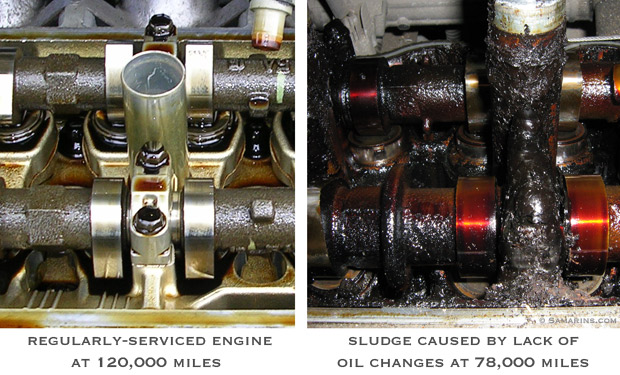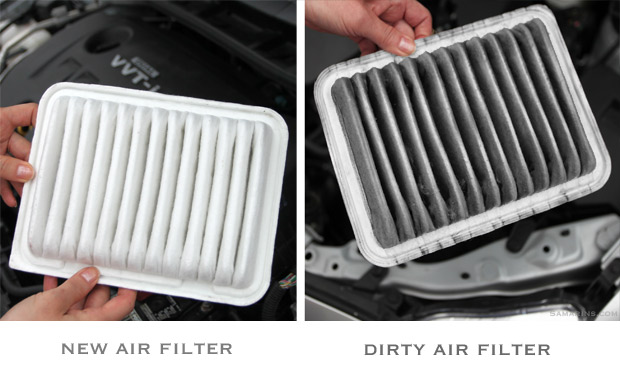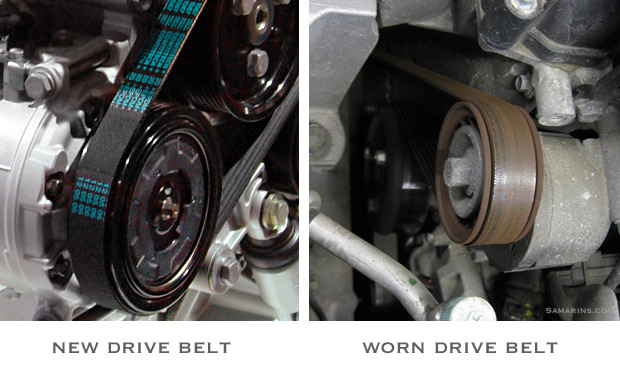How to maintain your engine in
few simple step
 |
| Stress |
1. Break in your new engine
 |
| clean_engine |
Despite all the advancements in the automotive technology, a
new engine still needs to be broken in. When the engine is assembled at
the plant, the new engine parts are pretty tight. The idea is to let
the moving parts wear gently against each other, without overheating or
scoring. Generally, it means not to overload your engine for the first
500-1000 miles; check your owner's manual for break-in
recommendations.
2. Have your oil changes done regularly
 |
| engine_view |
Your engine will last longer if you change your oil regularly.
All moving parts inside your engine are lubricated by oil. With
mileage, engine oil gradually deteriorates, contaminates and loses its
lubricating qualities. Without regular oil changes, your engine will
eventually sludge up and wear faster. By changing your oil before it
degrades, your engine remains clean and well lubricated.
3. Know how to check your oil level and condition
 |
| Checking_engine_oil |
As you drive, some amount of oil is normally consumed by your
engine and the oil level gradually drops. Your engine wears faster if
it's low on oil. When you have a spare minute, check your oil level.
4. Your owner's manual has all the information you need
 |
| owner's_manual |
Your owner's manual has the map of the engine compartment with simple instructions how to check the oil level in your car.
5. Top up if it's low, change if it's dirty
 |
| oil_dipstick |
These are the example how your car's engine oil dipstick may
look like. If the oil level is low, top it up using the same oil type
as you already have in your engine. If your oil looks too dirty, see
when your next oil change is due.
6. Keep your engine from overheating
 |
| engine_temperature |
Overheating the engine could cause many expensive problems. A
severely-overheated engine might even need to be replaced. If you notice
the engine temperature creeping up higher than normal, have your
cooling system checked out.
In most cars, the normal engine operating temperature is
somewhere around the middle between 'Cold' and 'Hot'.
7. Keep engine coolant (antifreeze) level topped up
 |
| engine_coolant_level |
Your engine cooling system is filled with special liquid
antifreeze or coolant. Over time, some coolant may leak or evaporate.
Low coolant level is one of the most common reasons for your engine to
overheat. Have your coolant level checked at every oil change. Typically
the coolant level can be checked by looking at the overflow tank. If
it's low, have it topped up; your dealer always have the recommended
coolant type. If you planning to do it yourself, be careful, as the
cooling system is under pressure when the engine is hot! Check your
owner's manual for the proper procedure to check or add coolant and for
safety precautions.
8. If your "Check Engine" light stays on, have your car checked
 |
| check_engine_symbol |
If the "CHECK ENGINE" or engine symbol stays on or flashes with
the engine running, have your car checked out. This warning lights
comes on when your car computer system detects a fault with the emission
control system. Sometimes it could be something simple like a loose
gas tank cap, but it also could be caused by some engine problem that
can get worse over time.
9. Change your air filter in recommended intervals
 |
| filter |
A dirty air filter restricts air supply to your engine, causing
lack of power. An air filter needs to be replaced every 15,000-20,000
miles or more often if you regularly drive on unpaved or dusty roads.
Replacing an air filter is not very expensive.
10. Change worn engine drive belt(s)
 |
| drive_belt |
A drive belt runs an alternator, air-conditioner compressor and
other accessories attached to your engine. Some cars have only one
drive belt, others may have two or three belts. Over time, a drive belt
wears out; squeaking is the first early sign that a drive belt needs to
be checked. An extremely worn or cracked drive belt may break disabling
your engine. Typically, a drive belt is inspected during an oil change
service. If a drive belt shows signs of wear or cracks, it needs to be
replaced.
11. Tune-up
 |
| engine_check |
A tune-up is typically done at 60,000-90,000 miles. In newer
cars, a tune-up may include changing the spark plugs, air filter and
possible cleaning the throttle body. In older cars, distributor cap and
rotor, ignition wires and fuel filter may also need to be replaced.
12. Timing belt
 |
| timimng_belt |
Some cars have a timing belt
that also need to be replaced at recommended by the manufacturer
intervals; usually from 60,000 miles to 105,000 miles (96,000-168,000
km). A timing belt may also need to be replaced if it shows signs of
wear or is soaked in engine oil. Not all cars have a timing belt; many
newer cars use a timing chain instead. A timing chain can last very
long and doesn't need any service unless there is a problem with it.
13. Maintenance for turbocharged engine
 |
| turbo_engine |
A turbocharger is powered by very hot exhaust gases, but the
turbine shaft is lubricated by engine oil. This means that engine oil in
a turbo engine must withstand much higher temperatures. For this
reason, premium synthetic oil is the most suitable for a turbocharged
engine. When you stop a turbocharged car after hard driving (speeding,
towing, etc.) don't shut the engine off right away; let it idle for a
while to cool down the turbocharger. Very long uphill driving under
constant load can also overheat the turbocharger.
14. Oil additives
 |
| oil_additive |
Oil additives is a bit controversial topic and while some
people swear by them, car manufacturers don't recommend using any oil
additives in their engines. Over the years, we had different experiences
with various oil additives: some were helpful, others showed no effect
and some actually made the problem worse. One example were an oil
additive worked was the four-year old Honda Accord that was using too
much oil
between oil changes. We suspected that the oil rings were
sticking. We have added the commonly available oil additive that was
said to "Help free sticking oil rings" and it worked; after that, we
took this Honda on many long road trips and it didn't need any oil top
ups between oil changes.














